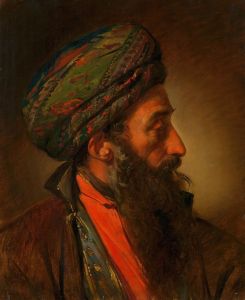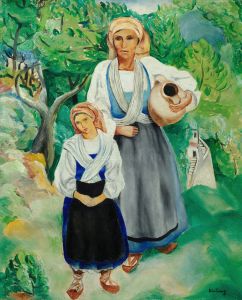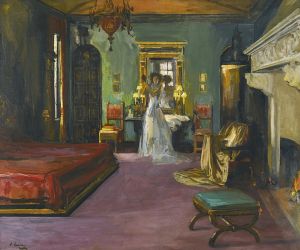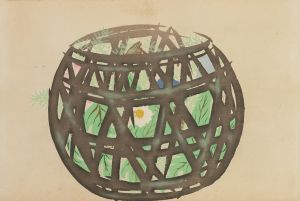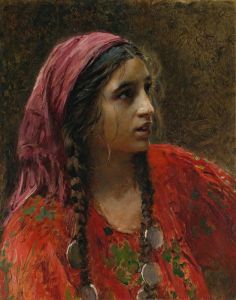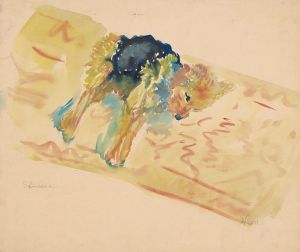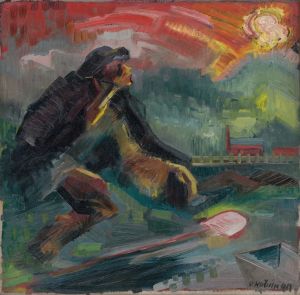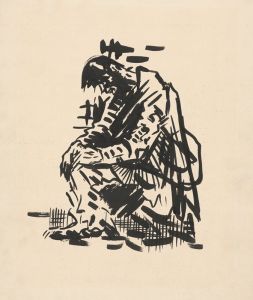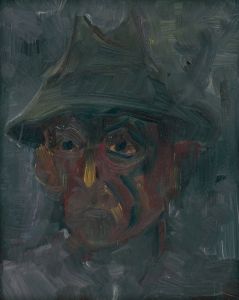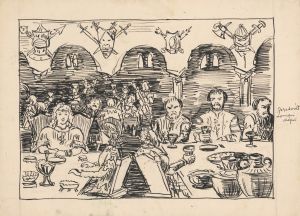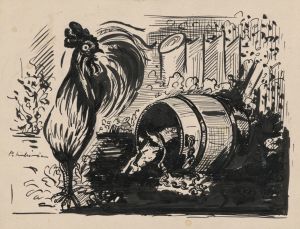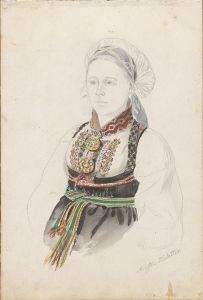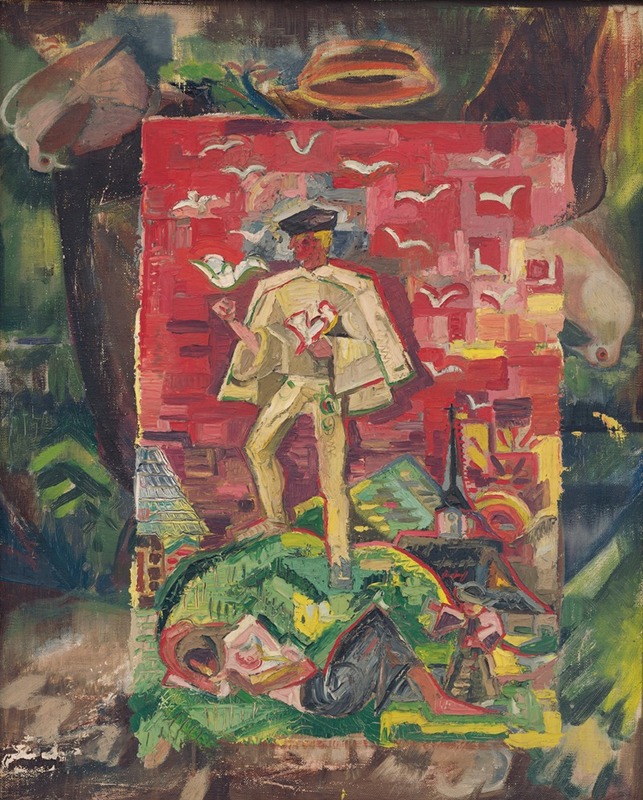
Symbolic Figure of a Man in a Folk Costume
A hand-painted replica of Arnold Peter Weisz-Kubínčan’s masterpiece Symbolic Figure of a Man in a Folk Costume, meticulously crafted by professional artists to capture the true essence of the original. Each piece is created with museum-quality canvas and rare mineral pigments, carefully painted by experienced artists with delicate brushstrokes and rich, layered colors to perfectly recreate the texture of the original artwork. Unlike machine-printed reproductions, this hand-painted version brings the painting to life, infused with the artist’s emotions and skill in every stroke. Whether for personal collection or home decoration, it instantly elevates the artistic atmosphere of any space.
Arnold Peter Weisz-Kubínčan was a Slovak painter and graphic artist known for his contributions to modern art in Slovakia during the early 20th century. One of his notable works is "Symbolic Figure of a Man in a Folk Costume," which exemplifies his unique style and thematic focus on Slovak culture and identity.
Weisz-Kubínčan was born on May 3, 1898, in Dolný Kubín, a town in northern Slovakia. He studied at the Academy of Fine Arts in Budapest and later in Vienna, where he was influenced by various modernist movements. His work often reflected a deep connection to his Slovak heritage, incorporating elements of folk traditions and national identity.
"Symbolic Figure of a Man in a Folk Costume" is a painting that captures the essence of Slovak folk culture through its depiction of a man dressed in traditional attire. The painting is characterized by its vibrant colors, intricate patterns, and a sense of pride and dignity in the subject's posture and expression. The folk costume, with its detailed embroidery and distinctive design, serves as a symbol of Slovak cultural heritage.
Weisz-Kubínčan's use of symbolism in this painting is significant. The figure's attire is not just a representation of traditional clothing but also a metaphor for the resilience and enduring spirit of the Slovak people. The artist's attention to detail and his ability to convey deeper meanings through visual elements are evident in this work.
Throughout his career, Weisz-Kubínčan faced numerous challenges, including political turmoil and personal hardships. Despite these obstacles, he remained dedicated to his art and continued to explore themes related to Slovak identity and folklore. His works often reflected a blend of realism and abstraction, with a focus on capturing the essence of his subjects rather than merely their physical appearance.
"Symbolic Figure of a Man in a Folk Costume" is a testament to Weisz-Kubínčan's skill as an artist and his commitment to preserving and celebrating Slovak culture. The painting is housed in the Slovak National Gallery, where it remains an important part of the country's artistic heritage.
Weisz-Kubínčan's contributions to Slovak art were cut short by his untimely death in 1945, but his legacy lives on through his works. His paintings continue to be studied and appreciated for their artistic merit and cultural significance. "Symbolic Figure of a Man in a Folk Costume" stands out as a powerful representation of national pride and cultural identity, embodying the spirit of Slovakia in a time of great change and uncertainty.
In summary, Arnold Peter Weisz-Kubínčan's "Symbolic Figure of a Man in a Folk Costume" is a significant work that highlights the artist's connection to Slovak culture and his ability to convey complex themes through his art. The painting remains a cherished piece in the Slovak National Gallery, reflecting the enduring legacy of Weisz-Kubínčan's contributions to the world of art.





